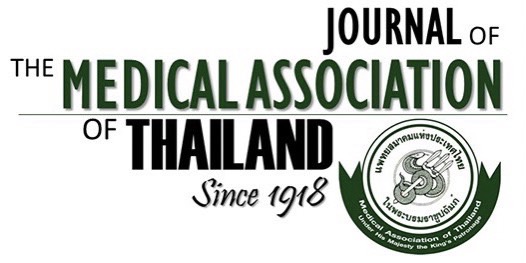Cytotoxic and Genotoxic Potential of Trigonostemon reidioides Extract on Human Caco-2 Cells
Punnee Nusuetrong PhD*, Mayyanee Boonmalert BSc*, Thongchai Koobkokkruad PhD**, Boonrat Chantong PhD***, Nonthaneth Nalinratana MS**, Duangdeun Meksuriyen PhD****
Affiliation : * Department of Physiology, Faculty of Medicine, Srinakharinwirot University, Bangkok, Thailand ** Department of Biochemistry and Microbiology, Faculty of Pharmaceutical Sciences, Chulalongkorn University, Bangkok, Thailand *** Department of Preclinical Science and Applied Animal Science, Faculty of Veterinary Science, Mahidol University, Nakhon Pathom, Thailand **** Faculty of Pharmacy, Rangsit University, Pathumthani, Thailand
Background : Trigonostemon reidioides roots have been used as a Thai traditional medicine for the treatment of drug
addiction; however, the cytotoxic and genotoxic potential of the herbal extract on human cells have not been clarified.
Objective : To evaluate the cytotoxicity and genotoxicity of the ethanolic extract of T. reidioides roots (TR) on human intestinal
epithelial Caco-2 cells.
Material and Method: Cell viability of TR (0.005 to 0.5 mg/mL)-treated Caco-2 cells was measured by MTT assay after 24
and 48 h exposure. DNA fragmentation was evaluated by Hoechst 33342 staining and comet assay was conducted in the cells
treated with TR at the concentrations equal to and higher than the IC50. The protein expressions of ERK1/2 as well as pERK1/
2 were investigated by immunoblotting. Densitometric analysis of thin layer chromatography (TLC) fingerprint of TR was
performed to identify scopoletin content.
Results : Exposure of the human Caco-2 cells to TR resulted in decreased cell viability with an IC50 value of approximately 0.2
mg/mL. Treatment of the cells with TR (0.01 mg/mL) for 24 h and 48 h significantly increased (p<0.05) cell proliferation. TR
at the concentration of IC50 induced DNA fragmentation, and TR (0.2 to 0.5 mg/mL) significantly increased the percentage of
DNA in the tail in a concentration-dependent manner as revealed by comet assay. Immunoblotting revealed that the
phosphorylation of ERK1/2 was significantly increased (p<0.05) in the cells treated with TR (0.5 mg/mL) when compared with
the control. Scopoletin content in TLC was approximately 271 ng per mg of extract.
Conclusion : The present study contributes current evidence that caution must be practiced concerning the dose and duration
of T. reidioides root medication. Moreover, further study in animal models concerning its safety application is required to
confirm the finding in the cellular level of the present study.
Keywords : T. reidioides, Cytotoxicity, Apoptosis, DNA damage, ERK1/2



